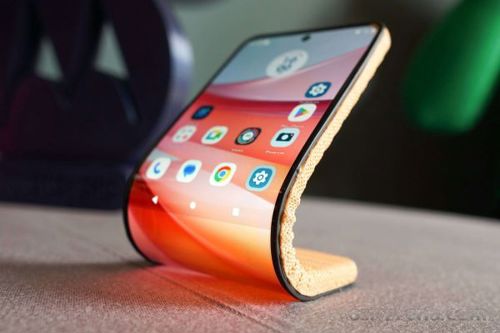This year’s Mobile World Congress (MWC) in Barcelona showed that technologies, many which were originally derived from the mobile sector, are now having an impact on a broader range of industries, from healthcare to automotive.
In fact, Mats Granryd, director general of the GSMA, the international mobile operator association, made the point that over half of the attendees at this year’s show were actually from industries other than mobile, with all of them trying to figure out how best to use the latest technology.
Whether it’s the use of 5G, Artificial Intelligence (AI) or cloud computing these technologies are radically driving change across numerous sectors, such as delivering more sustainable development or accelerated digitalisation.
AI was a key theme at this year’s show and following the launch of AI-enabled chipsets at last year’s Snapdragon Summit – both the Snapdragon 8 Gen 3 for smartphones and Snapdragon X Elite for PCs featured significant on-device AI capabilities - Qualcomm used MWC to unveil an AI Hub that will help developers produce applications supporting on-device AI.
Qualcomm and others are promoting the potential for on-device AI as a way of driving a significant replacement cycle in smartphones and PCs. On-device AI is set to provide greater privacy and security benefits by avoiding the transfer, storage, and use of data on multiple platforms and cloud services while it’s also suggested that it will help to improve AI performance by providing faster processing and lower application latency.
Another benefit is that on-device AI models can be customised to meet users’ personalised goals while also reducing energy consumption.
Qualcomm’s centralised hub contains an accessible library of AI models and offers designers the ability to intelligently choose the most suitable processing unit — CPU, GPU or NPU.
According to CCS Insight, while a significant step, it highlighted the need to significantly increase investment in developer resources and engagement.
Prophesee, a developer of neuromorphic vision systems, and who has been working in collaboration with Qualcomm Technologies showcased its neuromorphic-enabled vision in cameras in mobile devices, demonstrating both the speed and quality of its technology.
The company’s event-based Metavision sensors and AI, have been optimised for use with Qualcomm’s Snapdragon platforms and offer motion blur cancellation and much improved overall image quality in scenarios in which conventional frame-based RGB sensors have tended to struggle i.e. fast-moving and low-light scenes.

“We have made significant progress since we announced this collaboration in February 2023, and can now demonstrate the impressive impact on image quality our event-based technology has in mobile devices containing Snapdragon mobile platforms. As a result, our Metavision Deblur solution has now reached production readiness,” said Luca Verre, CEO and co-founder of Prophesee.
Each pixel in the Metavision sensor embeds a logic core, enabling it to act as a neuron which can activate themselves intelligently and asynchronously depending on the number of photons they sense. A pixel activating itself is called an event and these events are then driven by the scene’s dynamics, not by an arbitrary clock, so the acquisition speed always matches the actual dynamics of a scene.
Plenty of foldable mobile concepts were also on display this year, such as Samsung’s In & Out screens that let a foldable fold both ways drawing interest.
Motorola displayed a concept smartphone that can be folded and wrapped around a user's wrist, turning it into what CSS Insight described as large "smartwatch".

A similar design was shown by Samsung which showed off an array of flexible ideas including multifold and rollable screens on its stand. These are certainly not new concepts and for some attendees it did suggest that there had been little significant development in the foldable category over the past year.
But the availability of flexible displays is growing, and the cost of foldable smartphones is falling so there were plenty of devices from smaller brands highlighting flip phones including the likes of Blackview, Energizer, Tecno and ZTE.
Li-Fi
The UK company pureLiFi, a specialist in LiFi technology, demonstrated its impact on connectivity by using light.
It unveiled the LINXC Bridge, a collaborative project between pureLiFi and Solace Power, a developer of wireless power technology, that provides robust connectivity indoors, particularly for 5G mmWave signals - the LINXC Bridge enables a signal transmission from outside to inside buildings.
pureLiFi also showed its LiFi concept SkyLite which is a whole-room access point that covers over 50 sqm of space, flooding the room with high speed, low latency and highly secure wireless connectivity.

pureLiFi’s full network access product range boasts IEEE 802.11bb compliance following the ratification of the new global LiFi standard in 2023.
LiFi Cube, SkyLite and all of pureLiFi’s client devices are 802.11bb compliant and represent the next evolution of LiFi technology, offering faster, more secure connectivity.
New platforms
Intel used this year's MWC to announce a new modular, open software Edge platform that it said would help enterprises to develop, deploy and manage edge and AI applications at scale with what it described as ‘cloud-like simplicity’.
“The edge is the next frontier of digital transformation, being further fuelled by AI. What is needed is a complete edge-native platform to enable infrastructure, applications and efficient AI deployments at scale. Our modular platform is exactly that, driving optimal edge infrastructure performance and streamlining application management,” explained Pallavi Mahajan, Intel VP and GM of Network and Edge Group Software.
With the amount of compute happening at the edge growing fast many edge computing deployments are now incorporating AI, however, working at the edge is often complex and challenging due to the diversity of hardware, software and even power requirements.
Intel’s Edge Platform looks to provide ready-made solutions across industries and means that companies can now purchase a complete solution or build their own in existing environments. Intel’s platform provides infrastructure management and AI application development capabilities that can integrate into existing software stacks via open standards.
AI-RAN Alliance
Radio access networks (RANs) have become more complicated and both suppliers and operators are looking to use automated tools to improve performance and efficiency.
Consequently, there has been a growing demand for machine learning models that can balance network performance and electricity usage. At MWC the newly formed AI-RAN Alliance announced the creation of a forum with the aim of accelerating the RAN to improve performance, address new revenue opportunities from AI in the RAN and build an ecosystem.
Founding members included Amazon Web Services (AWS), Arm, DeepSig, Ericsson, Microsoft, Nokia, Nvidia, Samsung, SoftBank and T-Mobile and there are three focus areas: advancing RAN capabilities through AI to improve spectral efficiency; integrating processes to use infrastructure effectively and generate AI-driven revenue opportunities; and deploying AI services at the network edge through RAN to increase operation efficiency and offer new services.
Conclusion
MWC 2024 certainly re-established itself as the dominant mobile technology show and remains an essential bell-weather for an industry that’s shaping the future of connectivity.













